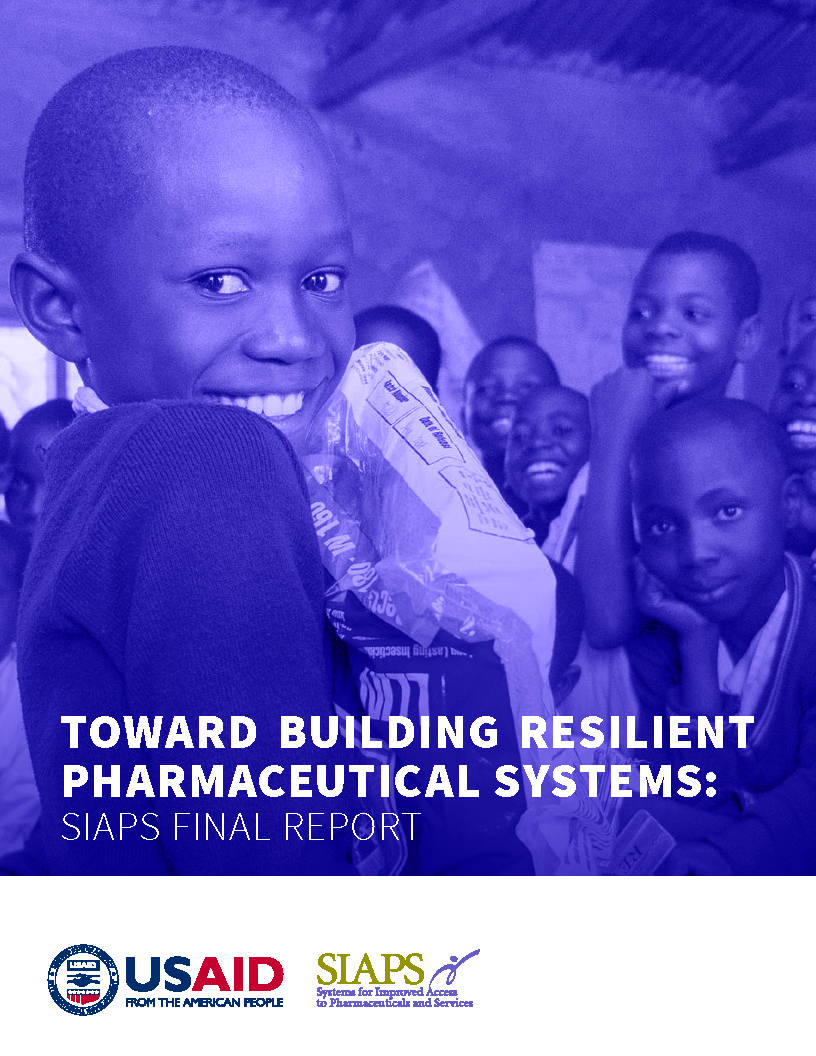Project dates: 2011-2016
Archive Burundi
Evaluation of community case management of malaria in the pilot health districts of Ghombo, Gashoho, and Mabayi
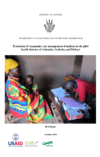
To accelerate achievement of the Millennium Development Goals (MDGs) and universal health coverage, Burundi has implemented different strategies, including PECADOM, or home-based community management of malaria. A PECADOM implementation guide was developed that compiled relevant information to inform the Ministry of Public Health and the Fight against AIDS officials about its implementation. The overall goal of … Read more
In the news: Defeating Malaria through Pharmaceutical Systems Strengthening
SIAPS’ role to control malaria was recently featured in Health & Humanitarian: The Supply Chain Review. Between 2000 and 2015, malaria case incidences declined by 41% and mortality rates by 62%. However, approximately 212 million people were infected and 429,000 people died in 2015, with the majority being children under the age of 5 in … Read more
Defeating malaria through pharmaceutical systems strengthening
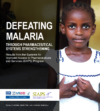
SIAPS has received funding from the US President’s Malaria Initiative (PMI) to work in eight countries—Angola, Burundi, Democratic Republic of the Congo (DRC), Ethiopia, Kenya, Guinea, Mali, and South Sudan—to strengthen pharmaceutical systems for improved malaria control. This report synthesizes the pharmaceutical systems strengthening efforts of SIAPS and documents how the approach was used to support … Read more
Defeating malaria through pharmaceutical systems strengthening: A review of SIAPS’s activities in eight countries
SIAPS recently published the results of its activities in eight countries (Angola, Burundi, the Democratic Republic of the Congo (DRC), Ethiopia, Kenya, Guinea, Mali, and South Sudan) to control malaria. This report summarizes systems strengthening interventions that support the prevention and treatment of malaria. With funding from the US President’s Malaria Initiative (PMI) and based … Read more
Evaluation and Expansion of Community Case Management of Malaria to Support Informed Decision Making
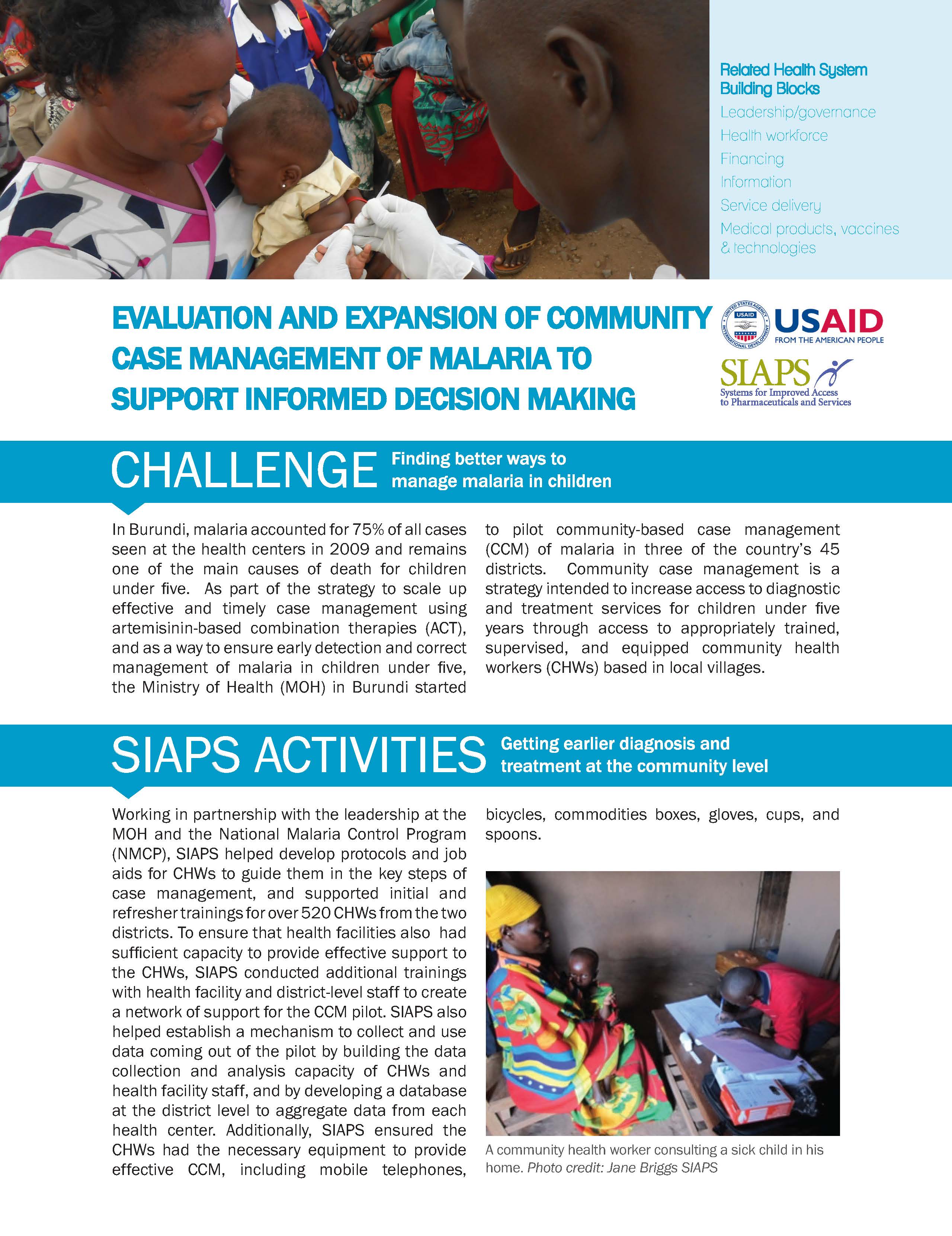
Working in partnership with the leadership at the MOH and the National Malaria Control Program (NMCP), SIAPS helped develop protocols and job aids for CHWs to guide them in the key steps of case management, and supported initial and refresher trainings for over 520 CHWs from the two districts. To ensure that health facilities also had sufficient capacity to provide effective support … Read more
Technical Highlight: Design, Implementation, and Use of Pharmaceutical Logistics Management Information Systems (LMIS)
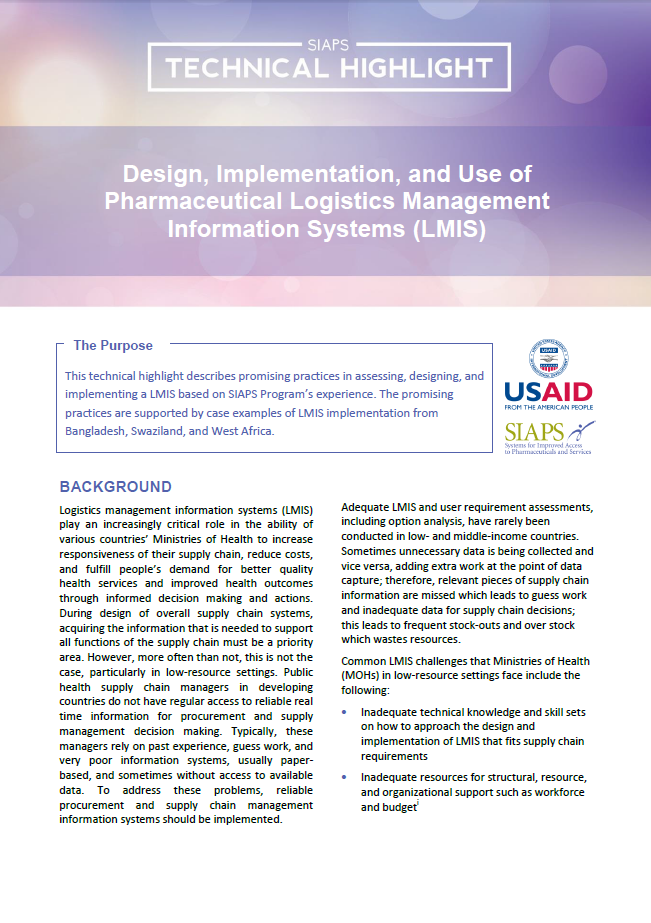
This technical highlight describes promising practices in assessing, designing, and implementing a LMIS based on SIAPS Program’s experience. The promising practices are supported by case examples of LMIS implementation from Bangladesh, Swaziland, and West Africa.
Systems for Improved Access to Pharmaceuticals and Services: Malaria Quarterly Update – January—March 2016
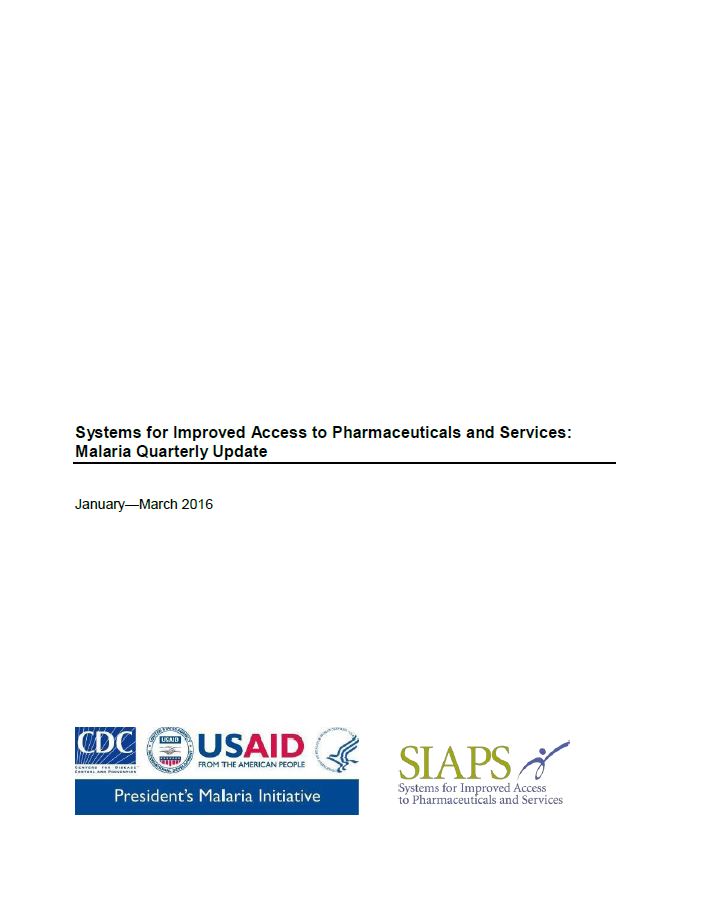
Working closely with the President’s Malaria Initiative (PMI) in both Washington and PMI- focus countries, the US Agency for International Development (USAID)-funded Systems for Improved Access to Pharmaceuticals and Services (SIAPS) Program aims to ensure the availability of quality pharmaceutical products and effective pharmaceutical services in support of PMI objectives. To this end, and based … Read more
Ensuring Access to and Appropriate Use of Medicines for iCCM: It takes a system
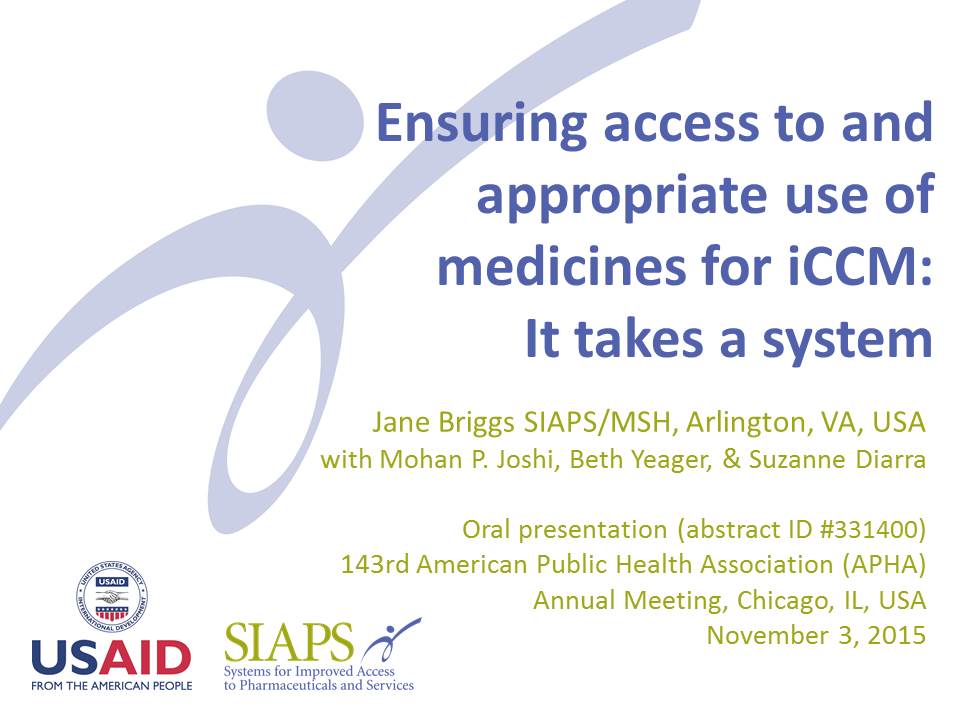
Briggs J, Joshi MP, Yeager B, Diarra S. Ensuring access to and appropriate use of medicines for iCCM: It takes a system. Oral presentation at the 143rd American Public Health Association (APHA) Annual Meeting and Expo, Chicago, IL, USA. November 3, 2015.
Malaria PMI Quarterly Updates April-June 2015
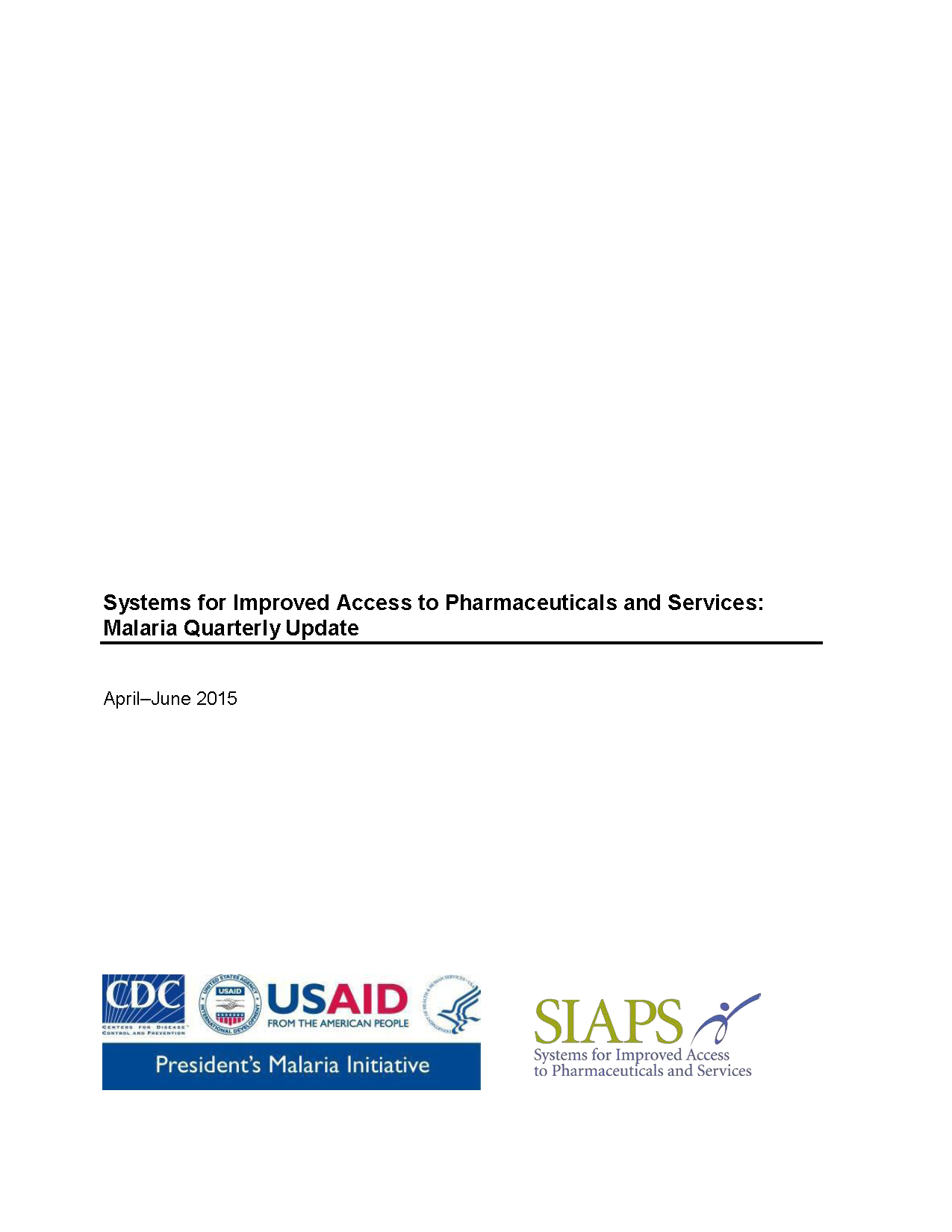
According to the World Health Organization (WHO), 1 malaria mortality rates fell by 47% globally, and by 54% in Africa between 2000 and 2013. During this period, an estimated 4.3 million malaria deaths were averted globally, primarily as a result of the scale-up of interventions. However, much remains to be done. Although 55 countries are … Read more

